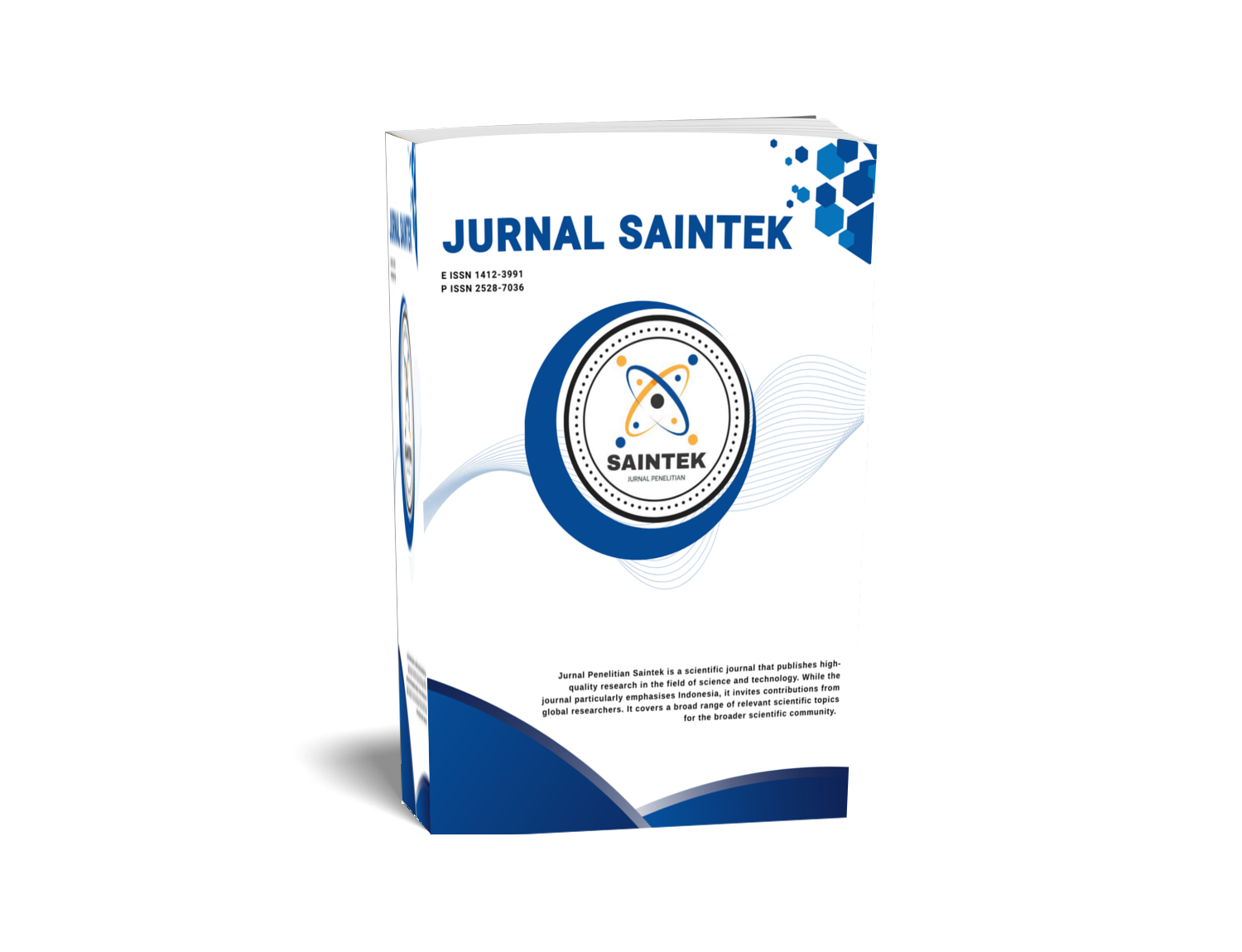EFFECT OF DIFFERENT METHODS OF COMPONENTS SOURCE OF OUTLINE OF NEW PLANT OIL (Artemisia vulgaris L) AND AN EFFECT OF ANTIBOYTE
DOI:
https://doi.org/10.21831/jps.v19i2.3506Keywords:
Artemisia vulgaris, mugwort, essential oil, steam distillation and GCMSAbstract
References
Belitz, D.H and Grosch, W. 1985. Food chemistry. New York: Springer Verlag. 774 pp.
Burt, S. 2004. Essential oil: their antibacterial properties and potential application in foods – a review. International Journal of Food Microbiology, 94, p.223-253. Jurnal Penelitian Saintek, Vol. 19, Nomor 2, Oktober 2014
Elsner, P and Maibach, I.H. 2005. Cosmeceuticals and active cosmetics. 2nd Ed. New York: Taylor and Francis. 675 pp.
Guenther, E. 1987. Minyak atsiri. Jilid 1. (Terjemahan). Jakarta: Penerbit Universitas Indonesia. Judžentiené, A and Buzelyté, J. 2006. Chemical composition of essential oils artemisia vulgaris L. (mugwort) from North Lithuania. CHEMIJA. 2006. T. 17. Nr. 1. P.12-15.
Kaul, V.K., Nigam, S.S., and Dhar, K.L. 1976. Antimicrobial activities of the essential oils of artemisia absinthium Linn, artemisia vestita Wall and artemisia vulgaris Linn. The Indian Journal of Pharmacy 38(1):21-22.
Kaul, V.K., Nigam, S.S., and Banerjee, A.K. 1978. Insectisidal activity of some essential oils. The Indian Journal of Pharmacy, 40(1): 22. Saadatian, M., Alizadeh, M., Agahaei, M., and Sharifian, I. 2012. Chemical composition of essential oil of Artemisia vulgaris from West Azerbaijan, Iran. EJEAFChe, 11 (5), [493-496].
Sastrohamidjojo, H. 2004. Kimia minyak atsiri. Yogyakarta: Penerbit Gajah Mada University Press.
Schrader, K. and Domsch, A. 2005. Cosmetology-theory and practice. Vol III, p.62. Augsburg: Verlag fur Chemische Industrie.
Sembiring, D.M. 2011. Isolasi dan analisis komponen kimia minyak atsiri dari tumbuhan binara artemisia vulgaris L di daerah Kecamatan Sibolangit Kabupaten Serdang dengan GCMS dan FT-IR. Tesis. Universitas Sumatra Utara.
Downloads
Published
How to Cite
Issue
Section
Citation Check
License
Who Can Submit?
Any individual may submit an original manuscript for consideration for publication in Jurnal Penelitian Saintek as long as they hold the copyright to the work or are authorized by the copyright owner(s) to submit it. Authors retain initial ownership of the copyrights to their works prior to publication, except in cases where, as a condition of employment, they have agreed to transfer copyright to their employer.
User Rights
Jurnal Penelitian Saintek is an Open Access journal. Users are granted the right to read, download, copy, distribute, print, search, or link to the full texts of articles, provided they comply with the conditions of the Creative Commons Attribution-ShareAlike License 4.0 (CC BY-SA 4.0).
https://creativecommons.org/licenses/by-sa/4.0/
Author Rights
Authors retains copyrights.
Jurnal Penelitian Saintek by http://journal.uny.ac.id/index.php/saintek is licensed under a Creative Commons Attribution-ShareAlike 4.0 International License.









